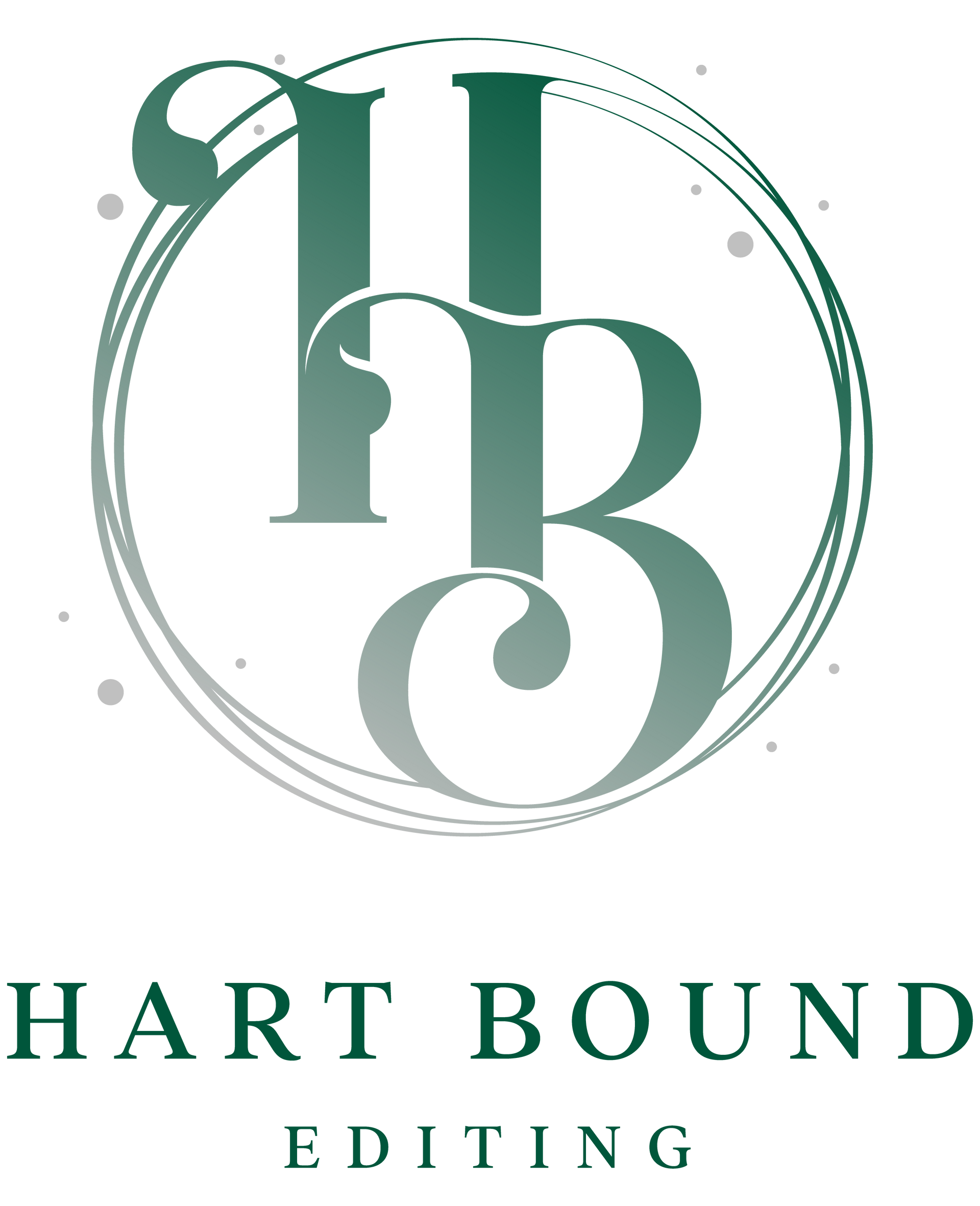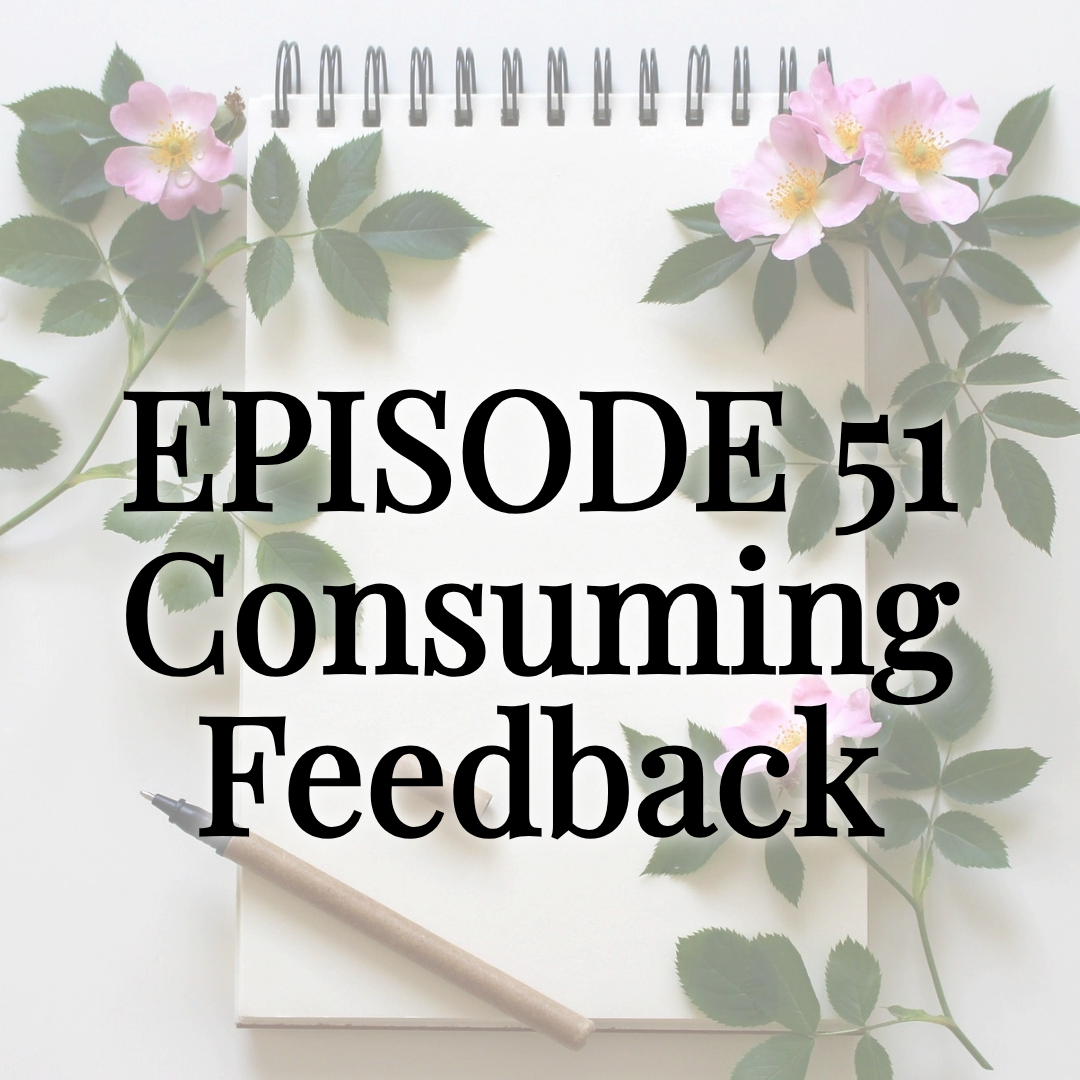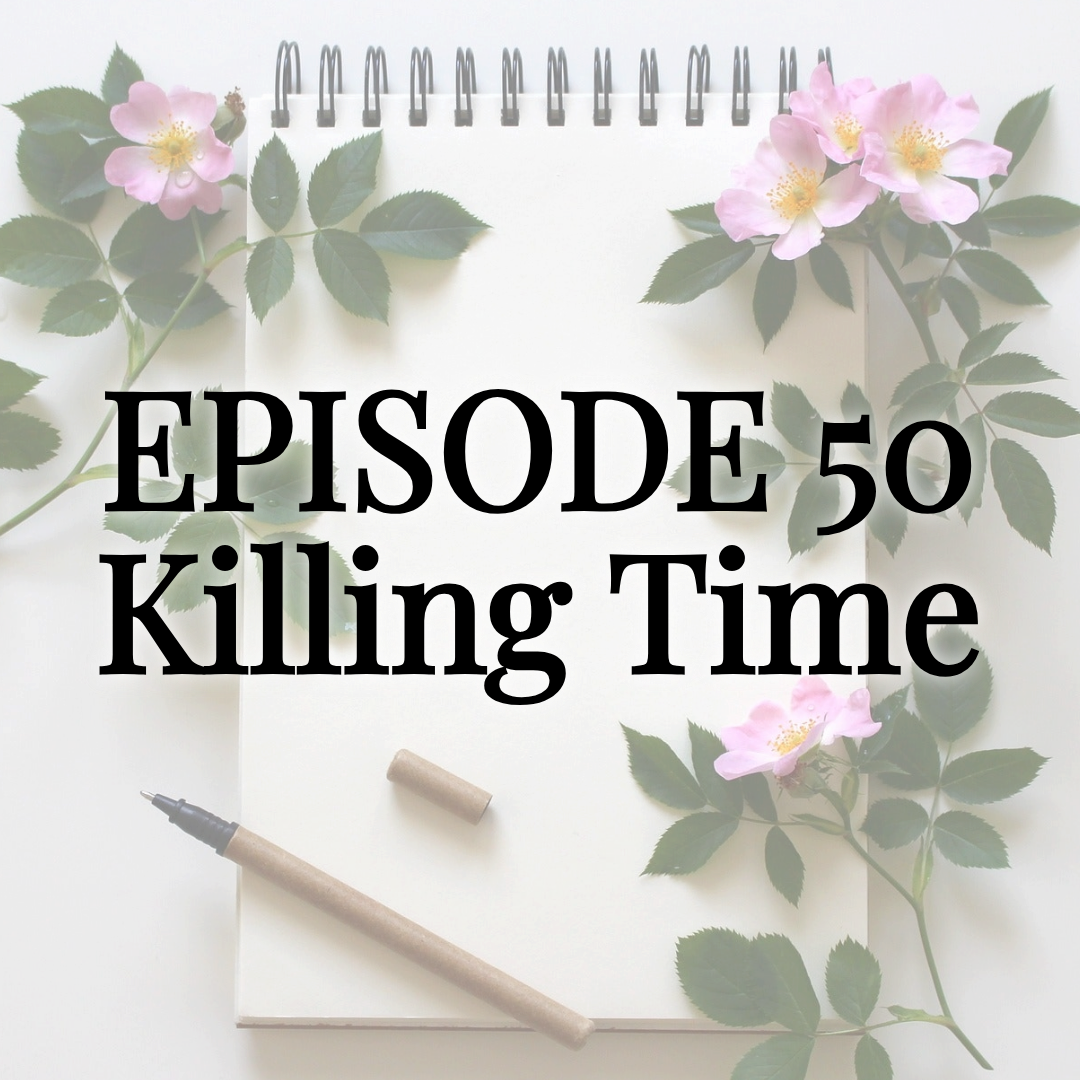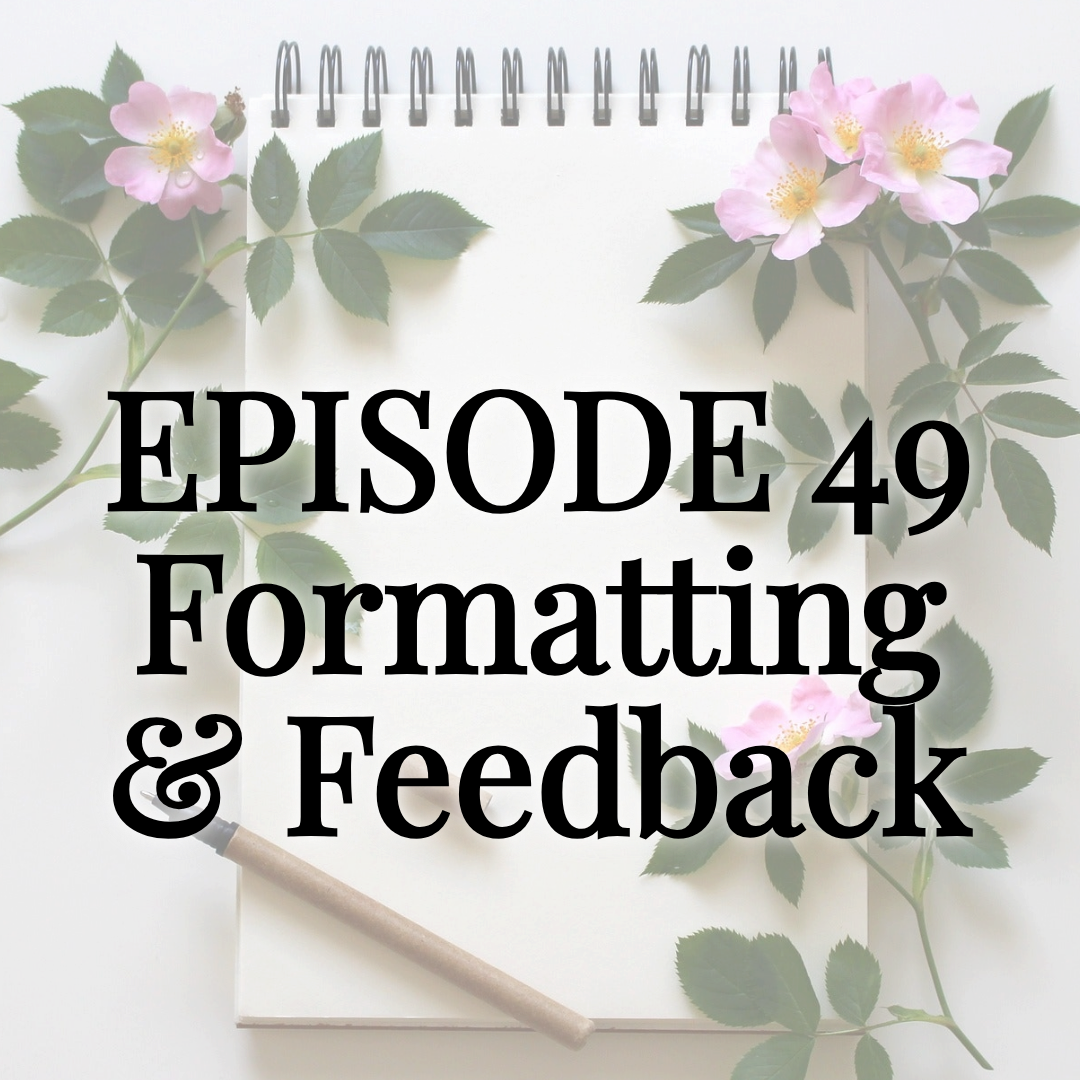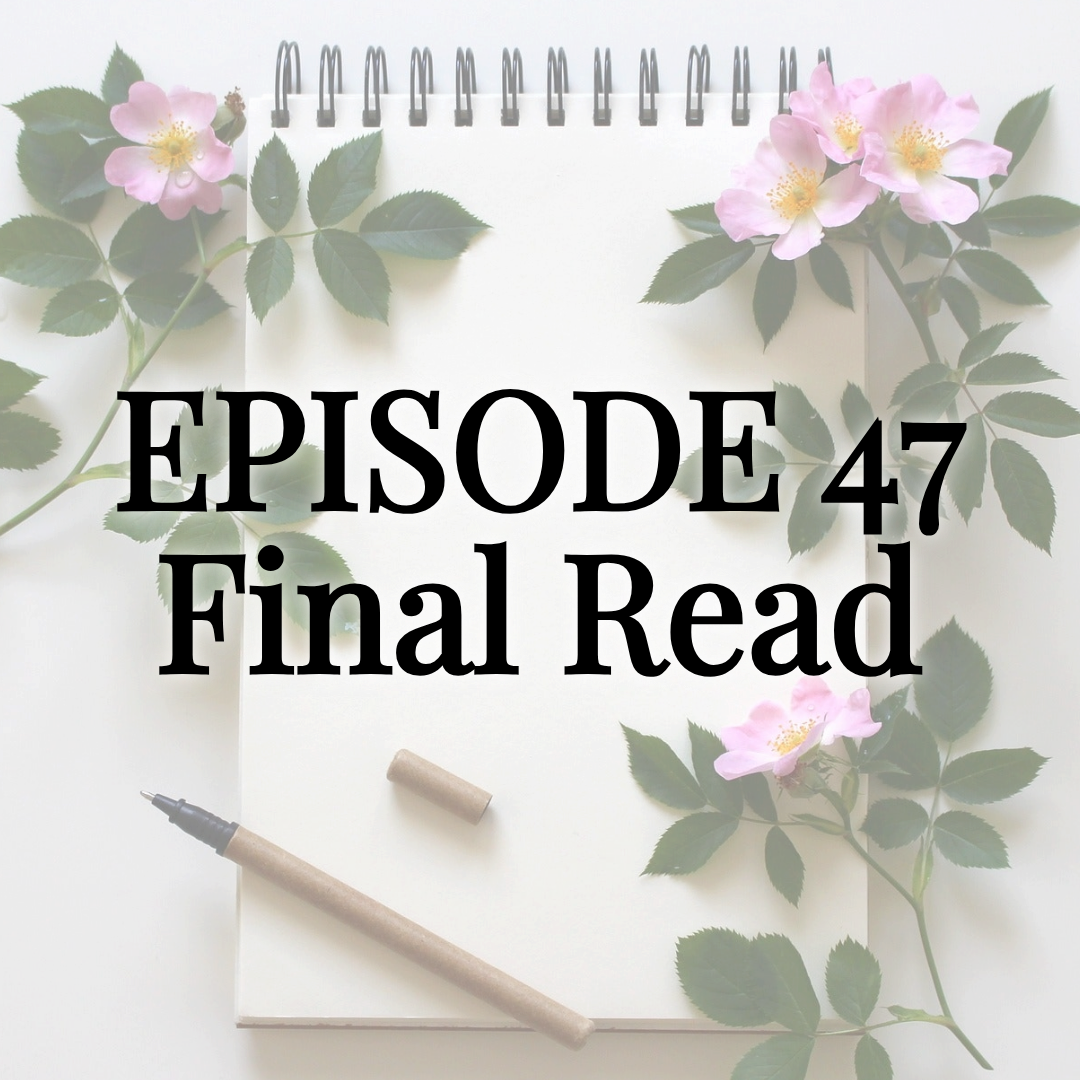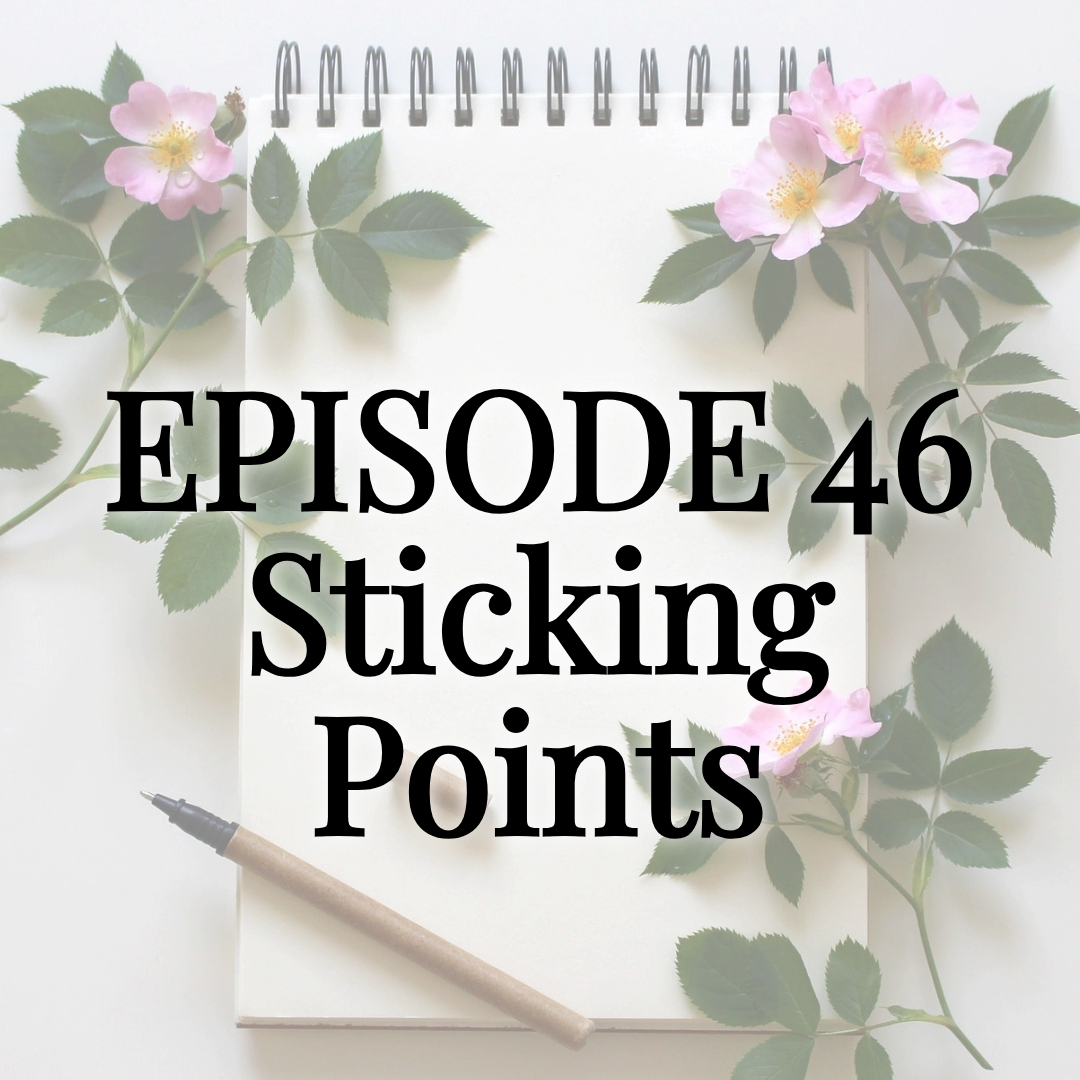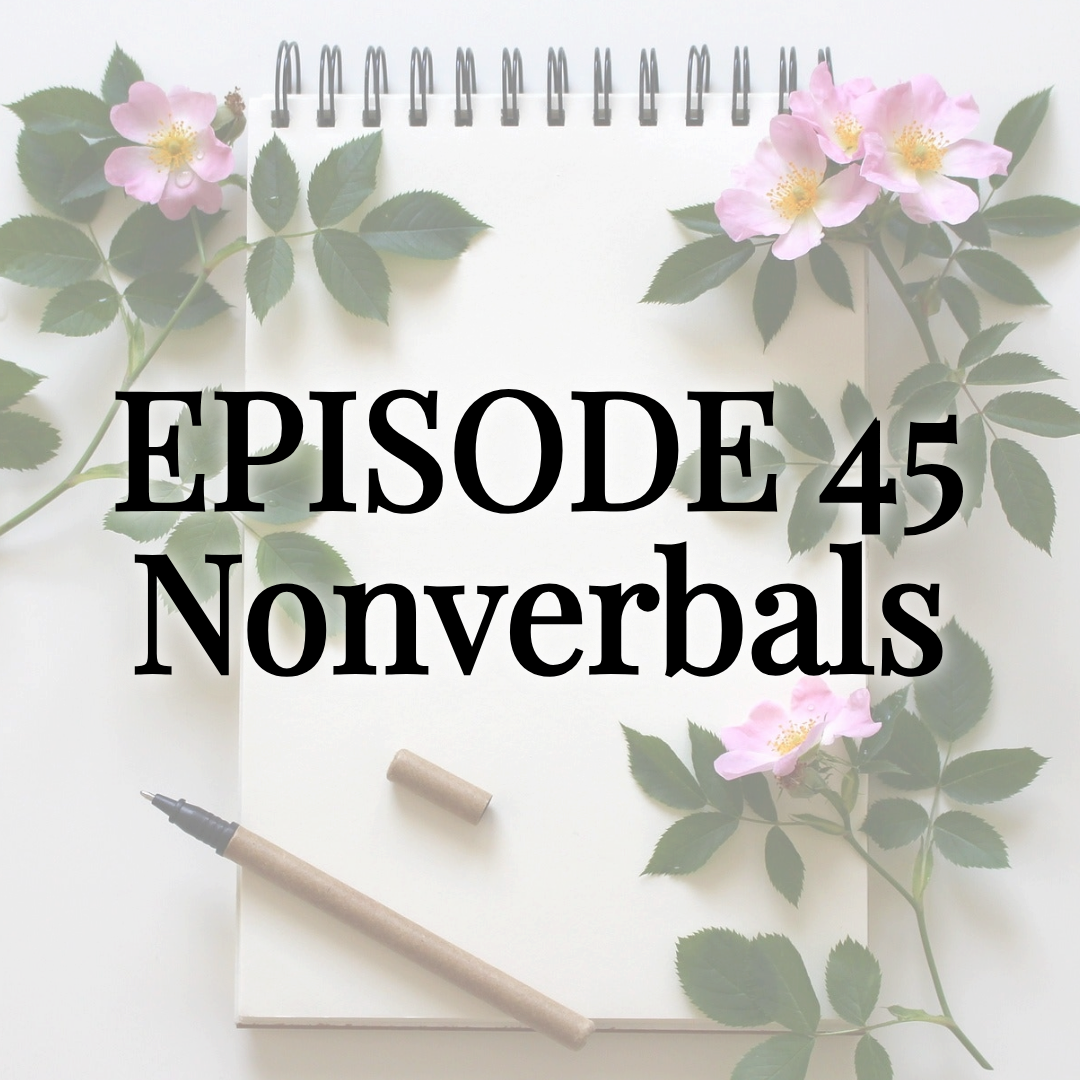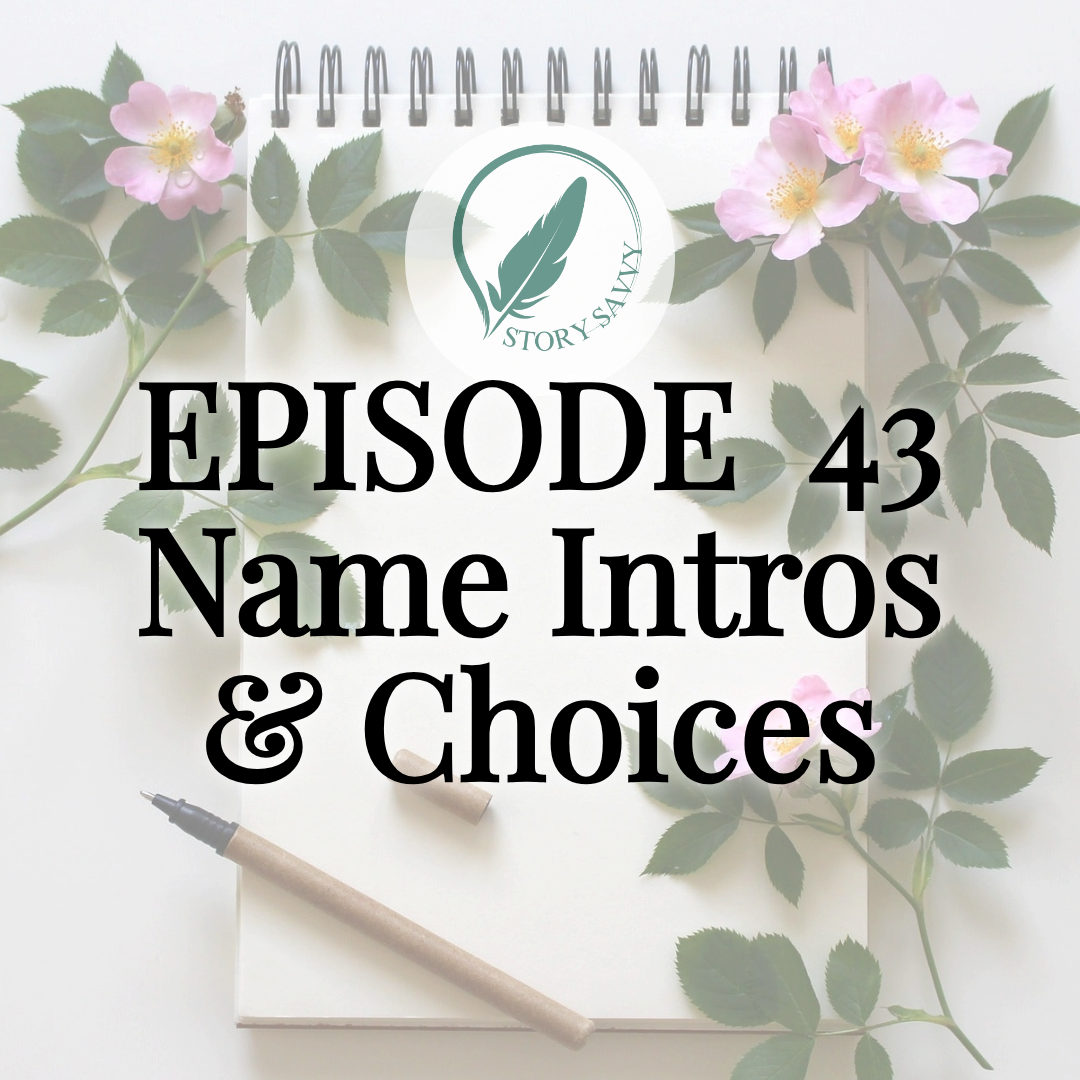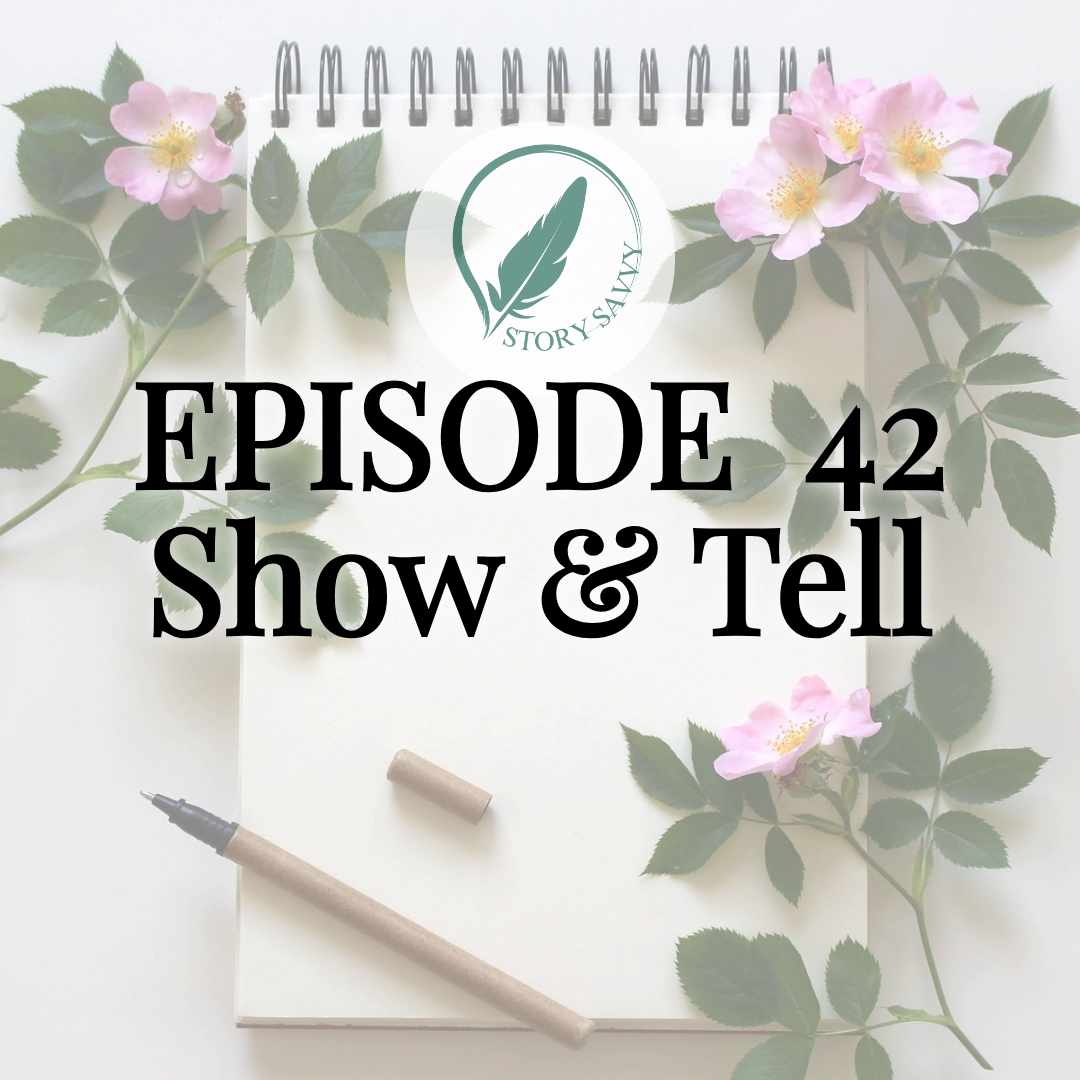Intangible World Building: Story Savvy Self-Editing Episode 32
Intangible World Building: After-episode thoughts, overview, and transcript...

I reference several other episodes in this series during the course of this episode, so I'm going to list and link theme here (in the order in which they come up in this episode) for your convenience.
Episode 1: Starting with Target Audience
Episode 12: Story Research for Fantasy
Episode 19: Plot holes & Character Inconsistencies
Episode 29: Character Consistency, Depth, & Uniqueness
Happy editing!
Episode 32 Overview:
Intangible World Building
"Are my intangible world-building details impacting the arena and avatars? Enough to justify active inclusion, instead of leaving them to subtext? Are my name, expletives, music, religion, cultural, and societal, and other intangible world building choices all working well together?"
In this podcast for fantasy authors, we continue discussing self-editing strategies for writers. This week, we discuss intangible story world development, including writing believable fantasy worlds, and writing societal norms in fiction. In Episode 32, Rebecca answers many questions surrounding intangible world building aspects such as culture, religion, etc.
Developmental editor Rebecca Hartwell and guest co-host Addy DuLac, who is standing in for Agnes Wolfe of Authors’ Alcove, walk through how to self-edit your manuscript for intangible world building aspects. Addy DuLac writes interracial historical romance with a bold mix of humor, high emotion, and just the right amount of spice in books like One Season with the Duke and the Troublemakers Trilogy.
Whether you’re polishing a second draft or outlining your fantasy series, this episode gives you clear tools to define what your intangible world building features are, where to include them, and how to make your fictional world feel real—without the dreaded info dump.
In this episode:
- What counts as intangible world building (and why it matters)
- How beliefs, language, religion, and social norms shape story choices
- Why some accurate details still “feel wrong” to readers
- Tips for maintaining tone through names, and cultural consistency
- When to explain, when to trust the reader, and when to revise
Recommended Resources:
Author’s Alcove Membership: authorsalcove.com
Read Addy DuLac’s books here: https://www.addydulacauthor.net/
See you next week for episode 33: Tangible World Building!
Episode 32 Transcript:
Intangible World Building
Rebecca Hartwell: Hello and welcome to the Hart Bound Editing Podcast. This is episode 32 of the Story Savvy series, where we tackle the 52 biggest self-editing topics and tips to help you make your good story great as a published author asks me, a developmental editor, all of the questions that you’ve wanted to. My usual co-host, Agnes, and I have covered a bunch in this series so far, and last week Addy and I went over avoiding scene stagnation by adding variety and interest.
Today we’re going to take a look at intangible world building in self-editing. By the end of this episode, you’ll hopefully feel confident in what the intangible aspects of world building are, know how to check and use them, and have a solid idea of where you may need to tweak those aspects in your own self-editing.
Joining me to ask all of these questions is my friend and the author of One Season with the Duke and the Troublemakers Trilogy, Addy DuLac. Welcome!
Addy: Thank you!
Rebecca: Why don’t you tell us a little bit about you and your writing, whatever you feel like mentioning, before we dive in with our questions here?
Addy Dulac: Hello! A little bit about me in case you’re unaware. Of course, I’m Addy Dulac.
I primarily write interracial historical romance, right now set in Victorian England. I’ve released three books between my two publishers. My first novel with Entangled was One Season with the Duke—the aforementioned—and it won three EMMA Awards for Best Novel, Best Debut, and Best Interracial Romance.
Rebecca: *claps*
Addy: Yay! Thank you, thank you.
My first trilogy, called The Troublemakers, is currently being released—it is currently still being released, but with Dragonblade Publishing. It features three heroines from diverse backgrounds and their equally rebellious male leads, taking on racial, familial, and social tensions while they fight for their right to love, live, and thrive in Victorian England. I love drama, angst, and steam. My favorite primary tropes are arranged marriage, marriage of convenience, and adversaries/enemies-to-lovers—sometimes they’re enemies, and sometimes they just don’t like each other. And that’s enough! It doesn’t always need to be, you know, a travesty.
I tend to write in third-person dual or sometimes triple POV. Mostly because it’s my favorite to read or write. No shade to anybody, but I’m not a big fan of first-person. It makes me crazy.
But I do—I think it’s the same with third person. Third person deep POV is the best, but third person can be boring. And it’s the same thing with first person, right? Sometimes you read first person—I’ve read first person despite my lack of interest, and be like “this is amazing! And I’ve read the book in one day and it was amazing. And then there are other times…
Rebecca: To each their own. Absolutely.
Addy: Right! And then I’ve also read first person where—even with first person, sometimes it grabs me and pulls me in, and then for others it’s like: “I think you didn’t—I don’t think you know how this is supposed to work.” Right? Like, sort of thing, so… I think sometimes it's up to the skill of the author, and sometimes it's just people are weird, like me.
So, my fourth novel, and the last in The Troublemakers Trilogy, is due for release in September. It’s called Ms. Hawthorne’s Unlikely Husband, and it follows Ms. Elodia Hawthorne and the challenges she faces in trying to marry the man she’s loved since she was fifteen years old. So, fun stuff.
Rebecca: I’m excited for that.
Addy: Yeah, yeah, it's good times. She's the… She's the daughter of a Viscount. And you've met her in Book 1, and essentially, he's very rich, but he is essentially a merchant. He owns his family. He has a lot of, like, um… what do they call it? Intergenerational wealth. Because his family, they've owned these mercantile mills for a while. So, he has a lot of money, but he’s still a merchant, so he's not quite Charles Bingley yet. So, there's some questions about that, and like, you know, whether they should be getting married.
Rebcca: And it sounds like some fun, you know, spaces to explore in the novel.
Addy: Oh yeah, there's a lot of hijacks going on, but that was… but yeah, but that's book 3. So. So, fun times!
Okie dokie. Well, let's get into our questions. Intangible world building seems like a bit of an enigma of a topic, and I can think of a bunch of different things that could mean. Let’s first define what intangible world building is. What are we actually talking about here?
Rebecca: So, intangible world building is any world building that has nothing to do with the tangible aspects like geography, buildings, clothing, things like that. So magic systems, like I talked about back in episode 27, could count as intangible world building, but what we’re talking about in this episode applies to all genres.
Just to list some of the things that fall under this category, we’re looking at:
· Cultural markers
· Name choices for characters, places and objects
· What curses, expletives, and exclamations the people in your story use
· Music, writing, and communication
· Social considerations
· Religion
· And everything like that.
Anything that’s more about how characters perceive and experience the world than the physical surroundings.
Addy: So, it sounds like all of this is centered around the internal aspects of the character and how they perceive or think about things. Are there any ways in which we need to be cautious in creating these elements? Any ways we might turn a reader off from the story in ways that we may be blind to, since these things are often heavily influenced by our own worldview as a writer and the lens we see our own work through?
Rebecca: Yes, there is some room for caution there. But again—know your audience, what they are like, what they like, and own that. I’ve talked about this in so many different episodes. I personally have read books with what I thought was jarringly hip or trendy intangible world building—references characters were making that didn’t match the physical setting. But the author knew their audience, and my research into their niche backed them up on that.
Historical, high fantasy, and writing about a culture you’ve never lived in are, I feel, where you need to be the most careful. Especially for the latter—writing about cultures you’ve never experienced—I’d refer listeners back to episode 12. I think that was one of the episodes with a guest host. We covered sensitivity checks, using sensitivity readers, things like that.
But for historical and high fantasy, it’s really about making sure you have the right guardrails. If you know you’re writing Victorian romance, referencing something like “give me a call” doesn’t make a lot of sense unless you’re late Victorian. And talking about an app? Wildly inappropriate. If you’re writing medieval and say a conversation went “off the tracks”—they haven’t invented trains yet!
Addy: Right. Exactly.
Rebecca: So, knowing what your guardrails are for the intangible—how people think about things, the vocabulary they use, the way they view gender, sexuality, ethnicity, religion, and even morality—all of that is incredibly important.
Addy: And also, with respect to knowing your audience—specifically in historical romance—it’s one of those things where readers say they want accuracy, but they don’t want too much accuracy. Like, they don’t want to deal with the reality of chamber pots in Regency England.
Rebecca: Yes. And even when you present something accurately, it can sound wrong because your reader knows less about history than you do. I encourage everyone to Google “The Tiffany Problem.”
Addy: I was about to bring that up! For anyone not familiar, the Tiffany Problem is when people think a name like Tiffany is modern. But the name Tiffany has actually been used since the Middle Ages.
Rebecca: Right, early Middle Ages. So it's been around a long time. But people assume it’s anachronistic just because it sounds modern. Another example—sometimes people get tripped up over phrases or nicknames. Like, I’ve had people comment on a character using “babe” or “baby” and say it sounds modern. But it’s not!
Addy: Yeah, it's really not.
Rebecca: It can also just be a case of people putting their own experience of modern life onto these historical characters. One of the best examples I have of that is corset-wearing in the Victorian era. In reality, women were wearing corsets since they were toddlers. And they weren’t tight-lacing or rearranging their organs—for the most part. But corsets were a very necessary exoskeleton.
As someone who has done Victorian reenactment—those dresses, those hoop skirts, those heavy layers of petticoats will dig into your hips so badly unless you’re wearing a boned corset.
Addy: Yeah.
Rebecca: So, one of the things I often see in historical romance is these characters being desperate to not wear a corset. And it’s totally inaccurate. In reality, women wore corsets like modern women wear underwear. But every reader thinks it’s true that they hated it because so many other authors have portrayed it that way.
Addy: And it’s also about waist training, right? A corset is like a bra. I actually think that’s a perfectly good comparison. The first few times you put one on, it’s not comfortable. It’s annoying. And especially if you're wearing an ill-fitting bra, it can be the bane of your existence. But if you're used to wearing them—and especially if your proportions are like mine—it can get really uncomfortable if you're not wearing one.
Especially if I’m trying to do any kind of activity—it can be almost painful. So it’s like, no, no, no, this sucker needs to come with me. And if it’s uncomfortable, maybe it’s just badly fitted. Maybe you need a different kind. Maybe the wire broke. But that doesn’t mean you throw them out entirely. You adjust.
Rebecca: That’s such a great example. That’s tangible world building, but the mindsets around it—how people feel about the item—is where the intangible comes in. That mindset of “Do I want to wear this corset or not?” impacts how the character dresses, how they react if they’re seen without it, and how comfortable they feel moving through the world. That’s the part we’re encouraging writers to think about here.
Addy: Yeah, like imagine a character who sneaks out without wearing one and thinks she’ll be more comfortable—but ends up feeling weirdly exposed and uncomfortable all day. That moment of realizing, “Ugh, I wish I’d worn the stupid thing,” is a perfect character insight.
Rebecca: So, especially in fantasy—which is my genre—you really need to introduce every aspect because readers can’t always default to something. Versus historical fiction, where a lot can be taken for granted. You still need to establish location, social standing, and tech level, but you don’t have to explain every single thing the way you do in fantasy.
So, my answer to your question—how to tell if something is worth including—is: ask yourself if this specific aspect steers the story at any point. Does it give the protagonist an opportunity they wouldn’t have otherwise had? Does it illuminate something important about their mindset, personality, fears, or goals?
And then ask: is the job that this world building element is doing worth the words you’re spending on it? If it is, great—keep it. If not, maybe it should stay as subtext or be trimmed down.
Addy: Yeah. So I know this series is geared toward fantasy, but this definitely overlaps with historical fiction too. For fantasy writers, how do you suggest keeping track of all these intangible world building decisions so they stay consistent across a book or series? And if someone picks, like, a Renaissance-ish default setting, do all of their intangibles have to match that too?
Rebecca: Okay, so first—how to keep track. I recommend using a series bible. Even for standalone books. Just a simple document where you jot down decisions: what the religion is like, what rights different people have, common greetings, taboos, etc. That way, when you're editing and you suddenly think, “Wait, what did I say about marriage laws?” you have a quick reference.
Another tool: choose a guiding theme or set of bumpers. For example, in my books, I have a modern-ish technology level but altered historical events, and all magic must come through either auras or demons. If a new idea doesn’t fit that, I find another way to write it. Guardrails like that help you stay consistent.
Also: re-read your manuscript multiple times. That’s not a groundbreaking tip, but it’s worth saying. And even then—you’ll probably miss something. That’s okay. There are traditionally published books with professional editors that still have world building inconsistencies. It happens.
Addy: So, going back to my other question—what if you pick a real-world historical backdrop for your fantasy world? Do all your intangible elements have to line up?
Rebecca: The short answer is no. You just need to know when you're deviating and do it intentionally.
Let’s say you pick a Renaissance Italy backdrop but want to include a 21st-century view on gender equality and a more medieval religious mindset. That’s fine! But you want to introduce those three mismatched elements early and explain why they coexist. Help your reader understand the logic of your world.
Addy: Yeah, it’s sort of like—okay, not as in-depth as that—but I was in an author group once, and we were talking about things that feel anachronistic. Like when a butler is doing something that’s really the valet’s job, and someone says, “He shouldn’t be doing that.” And most readers won’t care, but there will be a few who do.
And sometimes the author’s like, “I’m not rewriting the scene.” But the way I get around that is I’ll just have a character be aware it’s not the done thing. Like, maybe the butler was the one who raised the kid—he’s basically Alfred from Batman—and he just says, “This isn’t my job, but you’re lucky I love you.” That’s enough. You’ve acknowledged it. It becomes part of the world.
Rebecca: That’s such a great point. If you can convince the reader that it makes sense, you’re good. It’s all about showing that the characters themselves know the rule—and that they’re intentionally breaking it for a reason.
Addy: Yeah! You just let it be a quirk of the household. Then readers are like, “Okay, that’s just how it works for them.” Move on to Chapter Six. Let me live!
Rebecca: Yes. I love that.
Addy: Okay, so I know this is a self-editing series, but I’ve noticed that when I self-edit, I often end up going back to the bare bones of my world and brainstorming from scratch all over again. When we’re trying to develop intangible world building elements, what types of questions should we ask ourselves during that brainstorming?
Rebecca: Great question. So again, you can pick a default real-life setting or era to build from. That’s often the easiest place to start. Then ask yourself: what are the biggest deviations from that base reality?
Like, one common example is: women have a lot more freedom and respect than they historically would have. That’s fine—most of us don’t want to write historically accurate misogyny—but you should know that’s your deviation. Name it and own it.
Once you have that, you can brainstorm your world’s personality the same way you’d do character development. What does your society value? What’s its disposition—communal vs. independent, pessimistic vs. optimistic?
What does this world want? Is it striving for justice, or dominance, or wealth, or harmony?
What did this society grow out of? What’s their historical trauma or defining moment?
What kind of superstitions do they have? What curses and exclamations do people use—and why?
Do they believe in an afterlife? What kind? How do they earn their place? Are there multiple options?
Basically, treat the world like it’s one more character, with its own worldview and personality traits. Then go back during editing and make sure that “world character” stays consistent.
Addy: So how do memes, expletives, music, and things like that help enhance a story and give the reader a more intentional experience?
Rebecca: Immersion. Above all else—it’s immersion.
It can also help with relatability, but let me start with immersion. When a reader feels like they’re in the world—like they can picture it, move through it, imagine themselves as part of it—that’s immersion. It helps them emotionally invest in your story, your characters, your setting.
It also supports depth. And that’s not just for the reader—it’s also for you as the author. Especially for fantasy writers, world building is part of the fun. It helps you explore your own creativity, your theme, your setting. It brings a richness to the story that wouldn’t otherwise be there.
Things like food, music, sayings, expressions—those are what fandoms are built on. Think about it: Harry Potter, Lord of the Rings, A Court of Thorns and Roses, even Shadow and Bone—they all have phrases and world-specific details that fans quote, share, or dress up for.
So imagine if you wrote a series, and you hosted an “Author Ball” for your fans. Would they know how to dress? Would they bring something like “llama spread” or quote a specific song from your world? That’s how immersive, well-done intangible world building leads to fan culture and long-term loyalty.
Addy: Yeah! And even just with names—it really sets the tone. Like, I love high fantasy with beautiful, unique, lyrical names… and then suddenly there’s a guy named Greg. Or a woman named Alice. And it just yanks me out of the story.
Rebecca: Yes! Names are a huge part of maintaining a consistent tone. I cannot stand reading something where everything is immersive and unique—and then some dude named Bob walks in.
If you’ve created a magical elven realm and everyone is named Aerilynn and Tovash and Keirys… Greg should not be there.
Addy: Yeah. Nobody in that—nobody in Gondor was named Fred.
Rebecca: Right. Exactly. Yes.
Addy: And even like—Samwise, right? So that’s already a slightly altered name. But then you can have nicknames! Like, I’m thinking of the Grishaverse—Shadow and Bone and all that good stuff. Leigh Bardugo did this thing where she kind of inverted name patterns. So you have Alina Starkov instead of “Starkova,” and some of the men have names ending in “-a,” which is traditionally feminine in Russian.
But it was done so cleanly and consistently that I just thought, okay, maybe this is intentional. It’s clearly set in late-Victorian Russia, but the naming conventions are her own. And that’s fine—because it’s consistent.
Rebecca: Yes, consistency is the key. You can do whatever you want… just do it consistently.
Addy: Exactly. And if someone asks, “Did you mean to do that?” and you say, “Well, I did it for 300 pages,” then yes—it was on purpose.
Rebecca: There you go.
Addy: So, do you have an example where intangible world building really made or broke a story?
Rebecca: Yes. And this kind of leans more into the tangible, but it’s one of my biggest pet peeves—especially in high fantasy.
I hate to say it, but in the ACOTAR series, they have flushing toilets. And elastic socks. And leggings. Just lots of little modern conveniences where the author clearly thought, “Well, I could do the historical version, but that’s too inconvenient.” So they just default to modern, even though the rest of the setting is clearly high fantasy.
And then there are books I’ve read—often historical fiction or low fantasy—where you have characters that are, like, atheists in the medieval era, but no one ever reacts to it. It’s not addressed. They’re just openly atheist and the world accepts it without question. That’s not realistic unless you’re going to explain why.
Another one: I once read a steampunk fantasy set in Regency England, and they quoted Shakespeare. Which made me pause and ask, “Wait… did Shakespeare even exist in this alternate timeline? Would his work still be famous?”
You can use references like that—but you have to think about them. Just a quick sentence or explanation can make a world of difference.
Addy: Yeah, that would make—wow. When you said atheist in medieval times, my brain immediately went, “I don’t know about medieval, but it would make a lot of sense in the Renaissance.”
Rebecca: Sure, more sense. But even then, you have to look at the historical context. They didn’t really have that word, or at least it wasn’t used the way we use it now. You were still expected to go to church, respect religious leaders, observe holy days. Those things were so baked into the culture.
Addy: I mean, to me, being an atheist just means you don’t believe in God. Whether or not you follow the practice of religion is separate from that. Like, you could still go through the motions.
Rebecca: Right.
Addy: So, I can actually see writing a character like that—but again, I was thinking Renaissance. This is after the Black Death, when people were really starting to question the church. The clergy’s behavior during the plague, the way the church handled it—or didn’t handle it—led to a lot of disillusionment. That’s part of what paved the way for things like Martin Luther, right?
Because before, people were like, “Surely the church wouldn’t lie to us.” And then later they’re like, “Oh, they absolutely would. They do not care.”
Rebecca: Exactly. And that right there? That’s an intangible. That worldview shift matters. If you were writing that story, I know you’d include one sentence where the character says, “I lost my entire family to the plague—I can’t believe a just God would allow that.” And that’s all it takes to make the world building work. But you still need to do it.
Addy: Right. You can’t assume readers are just going to roll with it and say, “Well, it’s fantasy.” Like no—give me context. Ground me in the world.
Addy: And even in the show—because my friend started me watching it—A Discovery of Witches… I liked how they showed that in some parts of the world, witches are more accepted. Like, in England, they’re not necessarily burning anyone at the stake. But then they also acknowledge that in Scotland, witch trials are actively happening.
So you’re like, “Oh, this is tricky,” because at that point, Scotland and England are still separate kingdoms. So you’re thinking, “This could get interesting.” And then I’m like, “Y’all better move before Elizabeth dies and James comes down here—because he writes that giant witch-hunting book.” That’s going to get real awkward real fast.
Rebecca: Yes! That’s such a good example of how tangible setting and intangible world building—like how witchcraft is perceived—interact. And it matters to the plot. That’s what makes it strong.
Addy: Yeah, and I’ve never read the books, but I started watching the show. I mean… it was Matthew Goode, so I was going to watch it, obviously. But yeah, I immediately started thinking, “You really have to be careful when you’re getting too close to real historical settings.” Because the ripple effects are huge.
Like, if you write a story where Queen Elizabeth I dies earlier, that changes everything. Now James comes down sooner, and all this other stuff happens differently. It’s a whole domino effect. That gives me so much anxiety!
Rebecca: Same. That’s why I stay away from major historical figures when I write. If I ever do historical fiction, it’ll be about some small village with characters who have zero impact on the big events.
Addy: Exactly! I mean, I write historical romance, and even I have to be careful. Because the historical record only captures so much. Like, someone like me wouldn’t be in it—not because I’m Black, but because of socioeconomic status.
There’s no record for people like me. The most you might get is a birth record, maybe a baptism, a death certificate. That’s it. You don’t get insight into who they were, what they thought. So I think about that when I write. There are whole lives that just… never got documented.
Rebecca: And that’s where fiction comes in. That’s what we’re doing—filling in those blank spaces with imagination, but grounding it in intentional world building.
Addy: So, I know we need to wrap up, but I do want to ask one last question. When should we establish these intangible world building elements? You kind of touched on it earlier—should they evolve over the course of the story? And what are some best practices around doing that? I assume you never want to, like, throw everything in at the beginning and info-dump, right?
Rebecca: Yes—please don’t info-dump. Like I mentioned earlier, earlier is usually better, but it doesn’t have to mean all at once. I suggest introducing intangible elements when they become relevant. You don’t need to mention everything ahead of time—just wait until it matters, then reveal it naturally.
Showing something just in time for it to be vitally relevant is always better than telling the reader “just in case.” That’s a general world building best practice.
And remember—you can show intangible elements through secondary characters long before it’s relevant to your protagonist. Like, say in Chapter One, a woman is begging for money, and your protagonist sneers and thinks, “Well, that’s what unwed mothers deserve in this society.” That moment sets the stage.
Then later, when your protagonist becomes an unwed mother herself, there’s already a built-in system of cultural consequences and a moment of reckoning.
Addy: Right. And I also think if the circumstances for the character change, that can force them to start paying attention to things they didn’t before. Like, if they start off secure—happy family, everything’s fine—and then they end up on the run, suddenly they’re hyperaware of their surroundings.
All of a sudden, those cultural beliefs and norms aren’t just background—they’re survival. Things they used to ignore now matter. And they have to start engaging with that intangible world building in a new way.
Rebecca: Absolutely. That’s a perfect example of how those elements can evolve and become more important over time. And whether it’s the character’s mindset that changes, or the culture around them, or just the way you explore the topic—it’s all valid. Just make sure that if something directly contradicts what was shown earlier, you explain why.
For example, if your story starts with the idea that unwed mothers are universally shunned, and halfway through someone runs a home that supports them, then address that shift. Is that person unusual? Is the culture changing? Don’t just pretend both are true—make the evolution part of the story.
Addy: Yeah, well—thank you!
I was also thinking—if the circumstances change for the character, they’re going to be paying attention to other things, like... maybe they didn’t care about the class system before, or religion, or family shame, but now they have to. Maybe it used to be something they could ignore. But now they’re alone on a highway with one good leg—and suddenly those intangible elements start to matter a lot more.
Rebecca: Absolutely.
Addy: Okay, this has been so much fun. Thank you so much.
Rebecca: You’re very welcome. Thank you for stepping in to guest host this episode. It was an absolute pleasure. I love getting off-track and talking through things like this!
So—next week, you and I will go over the more tangible side of world building, to wrap up this two-part topic. For now, I want to thank all our listeners for following along with the Story Savvy Self-Editing Series.
We’d appreciate it, as always, if you could like and subscribe to the Hart Bound Editing Podcast and the Authors’ Alcove Podcast, where you can find lots more content for fantasy and historical authors and readers beyond this joint series.
And finally, be sure to check out Addy’s awesome interracial historical romance books at addydulacauthor.net—that’s A-D-D-Y-D-U-L-A-C-A-U-T-T-O-R dot net—and follow her on Facebook, Twitter, and Instagram @Addydulac_author. Thank you again.
Addy: Thank you for having me!
Rebecca: Thank you so much for listening to the Hart Bound Editing Podcast. I look forward to bringing you more content to help you make your good story great so it can change lives and change your world. Follow along to hear more or visit my website, linked in the description, to learn how I can help you and your story to flourish.
See you next time!
